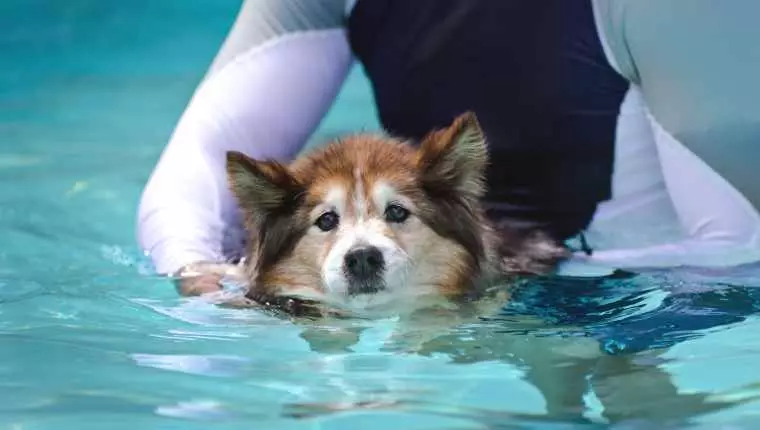Hydrotherapy, derived from the Greek phrase meaning “water healing,” has emerged as a groundbreaking approach in the realm of canine rehabilitation. Utilizing the unique properties of water, this therapeutic modality harnesses buoyancy, resistance, and hydrostatic pressure to facilitate healing and enhance mobility in dogs suffering from various health conditions. As a dog owner, understanding the intricacies of hydrotherapy is pivotal if you are contemplating this innovative treatment for your four-legged companion.
The potential benefits of hydrotherapy extend far beyond mere relaxation; they delve into the core of rehabilitative medicine. Many pet owners are unaware that this treatment can provide crucial support to dogs grappling with injuries or debilitating diseases. Conditions like torn ACLs, hip dysplasia, or arthritis are particularly well-suited for hydrotherapy interventions. By alleviating the weight placed on painful joints, water therapy offers a gentle yet effective means of recovery.
The Science Behind Water Healing
At the heart of hydrotherapy’s effectiveness lies its ability to manipulate environmental factors to favor healing. The buoyancy of water effectively removes gravity’s harsh effects on injured joints, allowing dogs to move without the stress that typically accompanies land-based rehabilitation. This weightlessness not only facilitates rehabilitation but also serves as a natural anti-inflammatory mechanism, which can dramatically alleviate swelling and discomfort.
Different types of hydrotherapy systems have been developed to address specific needs. For instance, underwater treadmills are commonplace for dogs with arthritis; their design enables controlled movement while the water offers resistance without overwhelming physical exertion. This unique interaction helps to build muscle strength and promote joint flexibility, fundamentally transforming the rehabilitation experience for many dogs.
The Types of Hydrotherapy Approaches
There are several methods of hydrotherapy, each tailored for specific rehabilitation goals. The underwater treadmill is frequently recommended for dogs with joint and mobility issues. After entering a watertight chamber, the treadmill’s gentle motion combined with the buoyancy helps to ease strain, offering a low-impact workout that rehabilitates strength and flexibility.
Another technique involves whirlpool therapy, often perceived as a luxurious experience akin to a doggy Jacuzzi. In this treatment, warm water jets provide deep tissue massage, alleviating pain while promoting circulation and enhancing recovery. As the jets work on specific muscle groups, they can provide targeted relief from soreness and stiffness, essential for healing after surgery or injury.
Additionally, swimming pools designed for therapy can be tailored to the individual needs of dogs, depending on their size and the nature of their injuries. With appropriate support, these sessions offer dogs the freedom to explore movement in a safe environment, bolstering their confidence and physical capability.
Comprehensive Benefits Beyond Rehabilitation
The advantages of hydrotherapy extend well beyond injury recovery. This therapeutic approach can yield transformative impacts, including enhanced cardiovascular health, improved blood circulation, and increased overall physical fitness. The regulated environment of hydrotherapy introduces a variety of exercises that can alleviate muscle spasms, significantly increase joint range, and often modify a dog’s gait positively.
Moreover, hydrotherapy offers emotional benefits. As many dogs suffer from anxiety or stress related to their injuries, engaging them in a soothing water environment can provide psychological comfort while facilitating physical healing. This multifaceted approach ensures that dogs receive holistic care that addresses their emotional as well as physical wellbeing.
Choosing the Right Professional Care
While hydrotherapy can be immensely beneficial, it is essential that such treatments are conducted by trained professionals. The importance of enlisting experienced therapists cannot be overstated; improper techniques or equipment mishandling can lead to exacerbated conditions rather than healing. Therefore, consultations with your veterinarian, along with careful consideration of therapists’ qualifications, should be a prerequisite before proceeding with hydrotherapy.
Cost is yet another factor that pet owners must consider when evaluating hydrotherapy for their dogs. Depending on the location, type of therapy, and specific needs of the dog, prices for sessions can range significantly. Generally, standard session costs may range from $40 to $60, but this investment can be invaluable when it comes to your dog’s health and recovery. The key is to weigh the long-term benefits against the initial costs for a well-rounded decision.
Incorporating hydrotherapy into your dog’s rehabilitation strategy may be one of the best decisions you can make. By harnessing the power of water, you are not only investing in their physical health but opening the door to a happier, more active lifestyle for your beloved pet. If you find yourself faced with the sobering reality of pain or injury afflicting your dog, consider the magic of hydrotherapy as a pathway to healing and rejuvenation.

